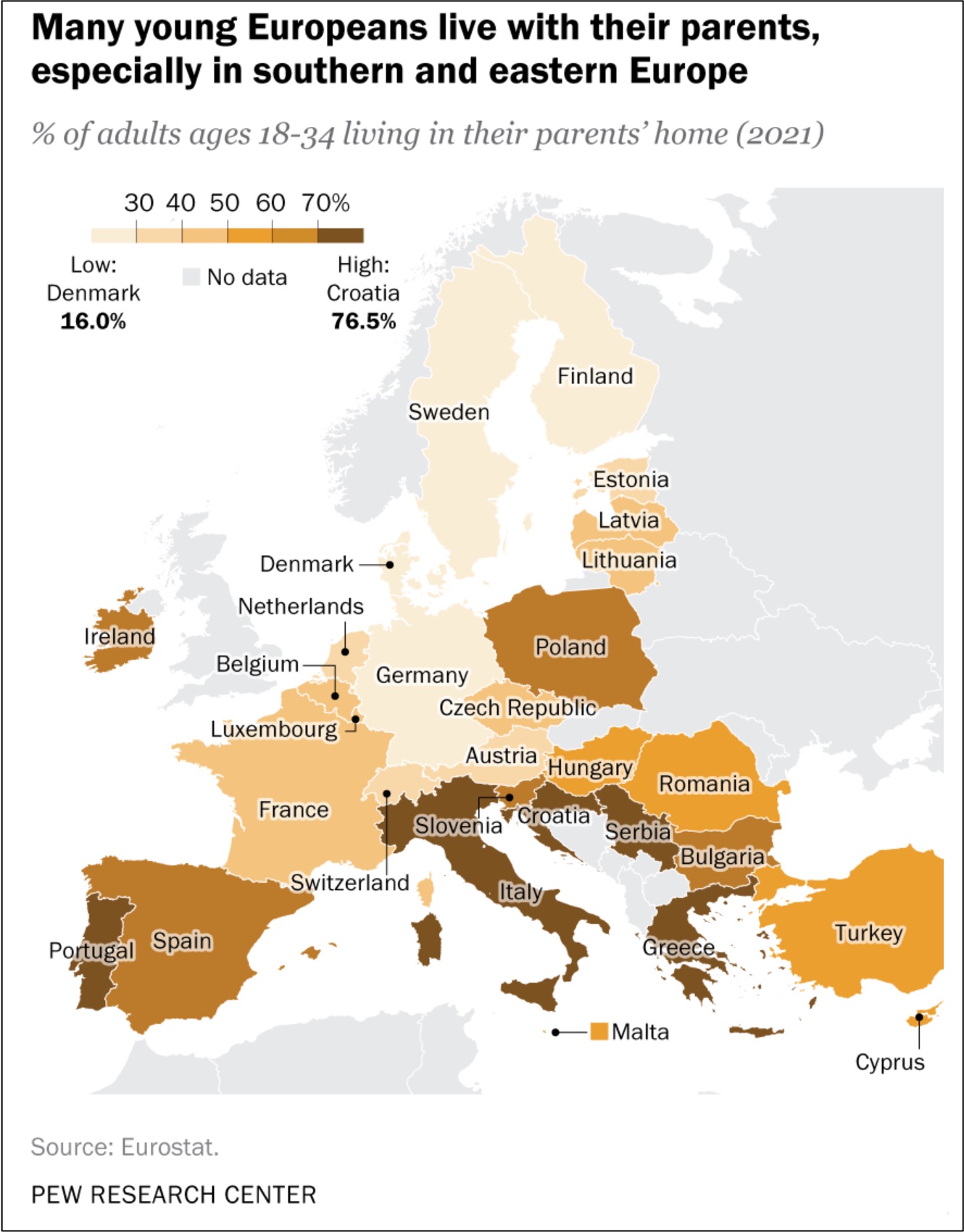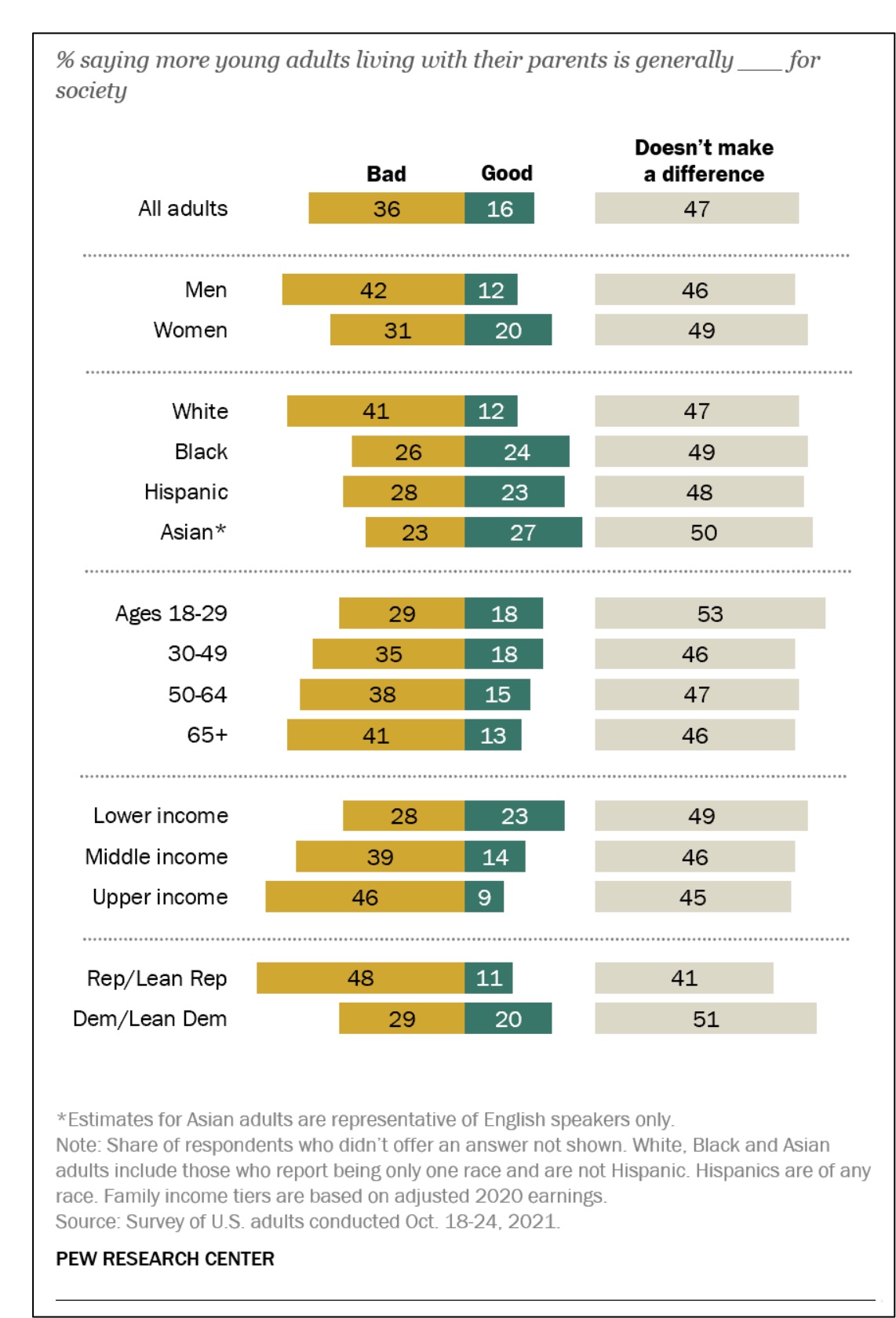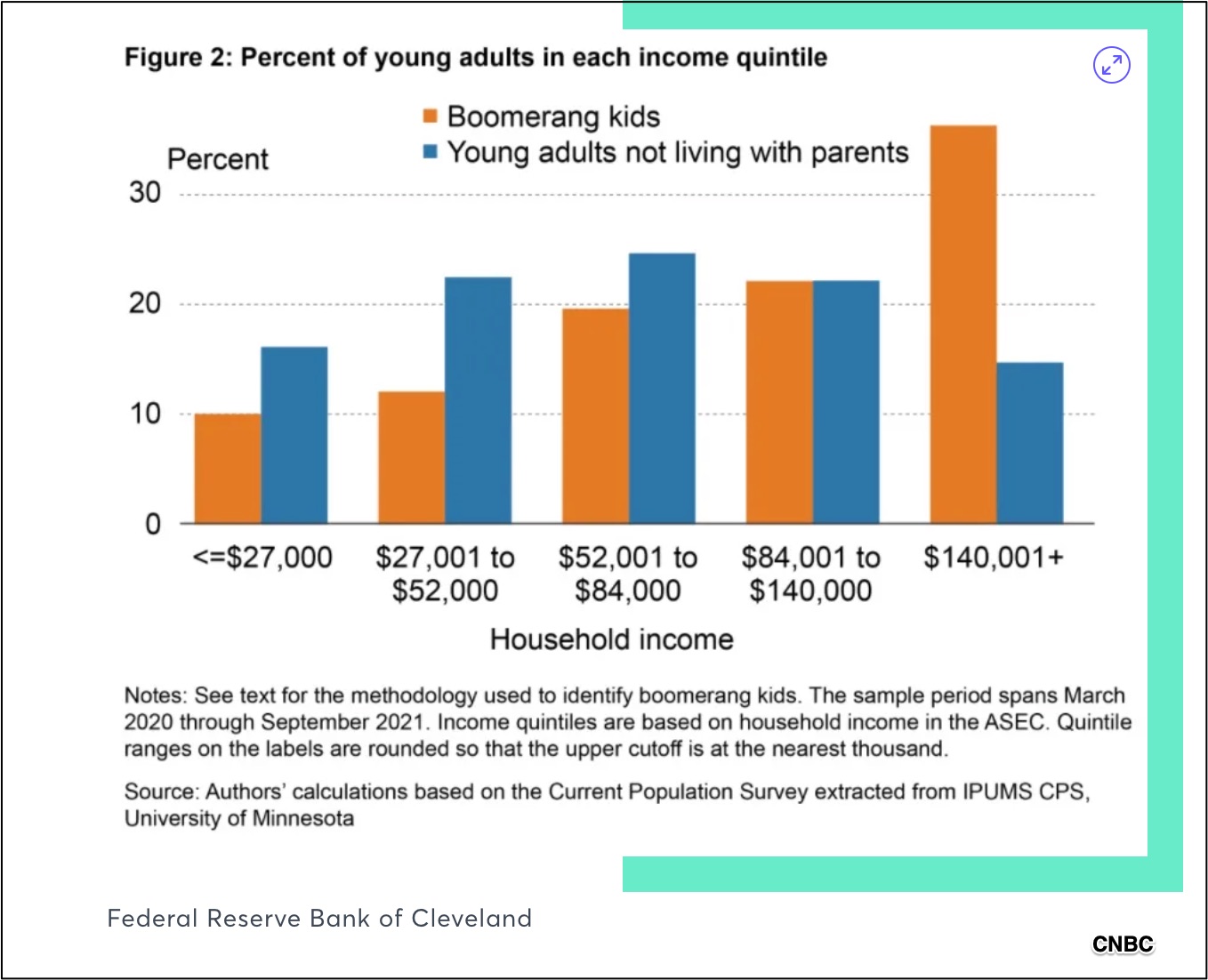Unlike the U.S. and Scandinavia, if you are an Eastern European male young adult, it is pretty likely that you live with your parents.
Our question today is why.
Multigenerational Households
Europe
More than 70% of young adults, ages 18 to 34, live with their parents in Italy, Croatia, Greece, Serbia, and Portugal, Meanwhile, moving north, the numbers for the Scandinavian countries–Sweden, Finalnd, Denmark–plunge to below 20%: But still, in 24 of the 29 countries in the Pew report, the households included a substantial proportion of young adults, and especially young men:

Some of the Pew data came from a recent study of 12 European nations. Directing us to culture and structure, they began by looking at the attitudes that could encourage people to stay or leave because of the benfits they expect. Here, they decided that most people in most countries expect benefits. They also unexpectedly concluded that the behavioral response to societal structures like housing markets made a minor difference. As a reuslt, the big determinant of the stay-at-home decision was the influence of subjective norms. Those were the norms that either did or did not exert pressure on young adults to leave or stay.
United States
Correspondingly, in the U.S., at 36%, more young men live with their parents than women (30%) in multigenerational households. But, our attitudes are somewhat different from our European counterparts. In the U.S. many of us, though not a majority, disapprove of young adults’ decision to live with their parents:
Providing more insight, the Cleveland Fed connected boomerang kids with affluence. Not shown below, they also told us that more of the young adults living with their parents were unemployed than those that lived in their own household:
Our Bottom Line: Households
As economists, it is pretty important to know who lives together because of the dual economic role played by households. As the source of land, labor and capital (in the lower loop), households provide businesses with the three basic factor resources. Meanwhile, on the other end in product markets, household spending typically fuels the GDP.
When adult children and parents form “composite households,” their behavior changes in factor and product markets:

Concluding, we can add GDP and jobs growth as a reason that young adults should form their own households.
My sources and more: Browsing through Pew topics, I realized it was time to return to who lives with whom. In 2016 and now, they looked at the “boomerang” adult children. Then this paper came in handy for the analysis as did CNBC.







